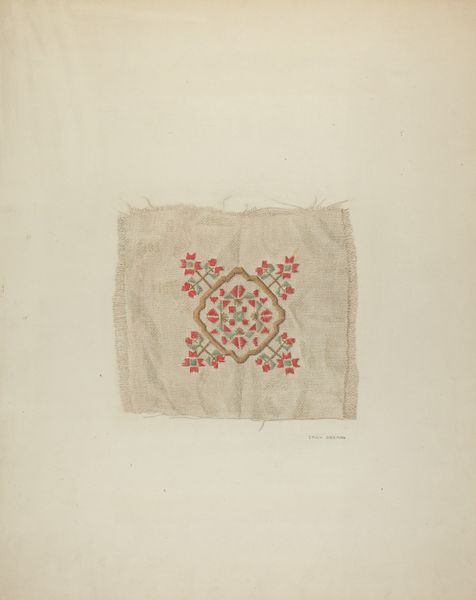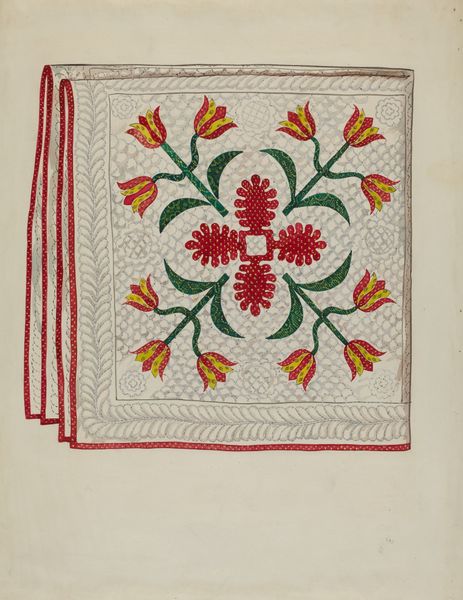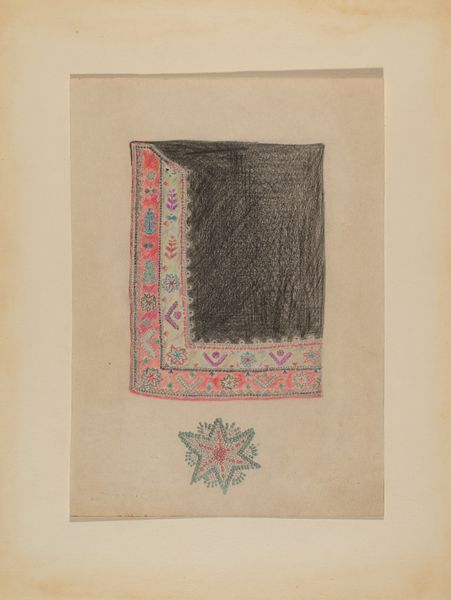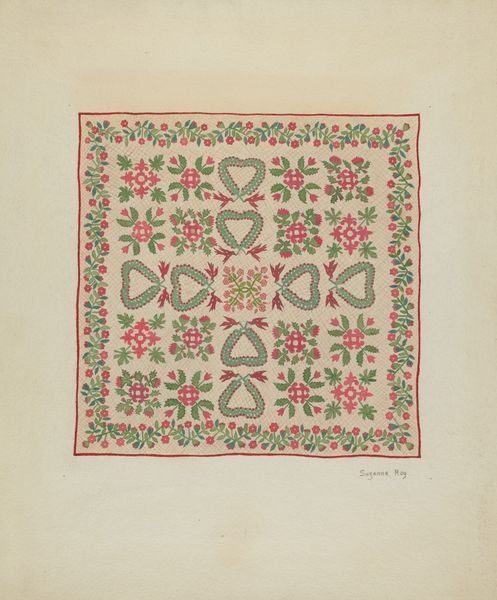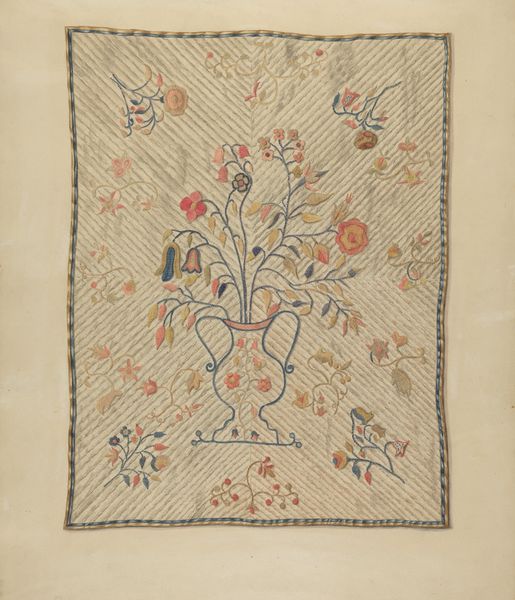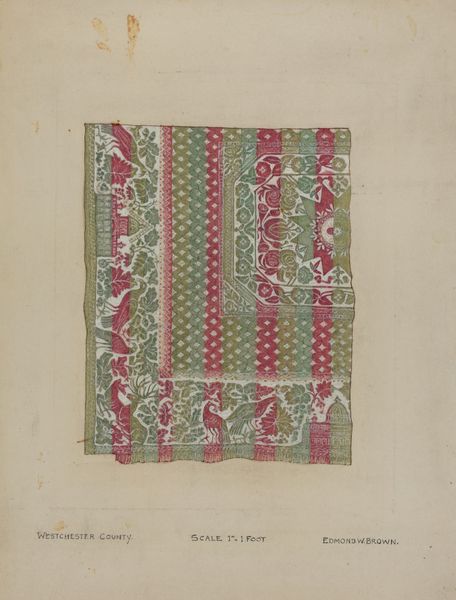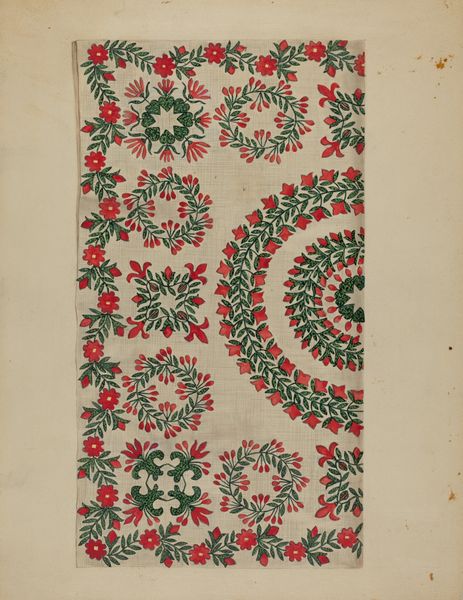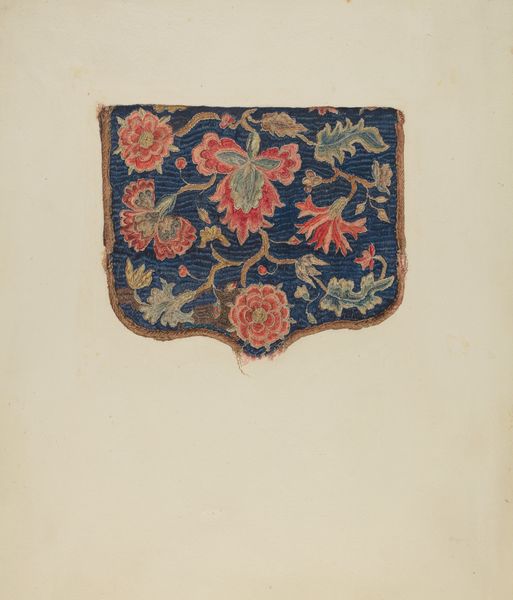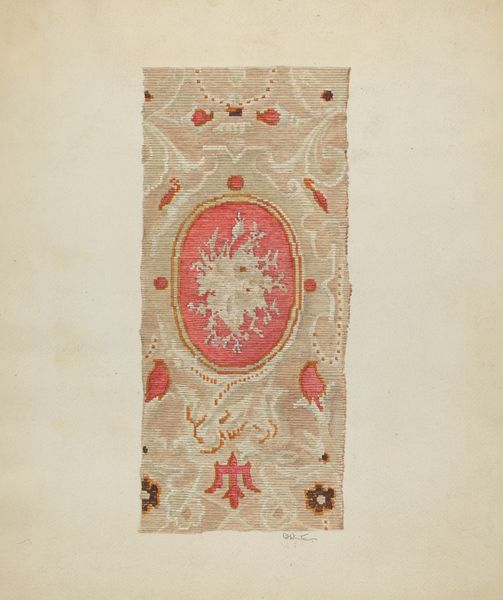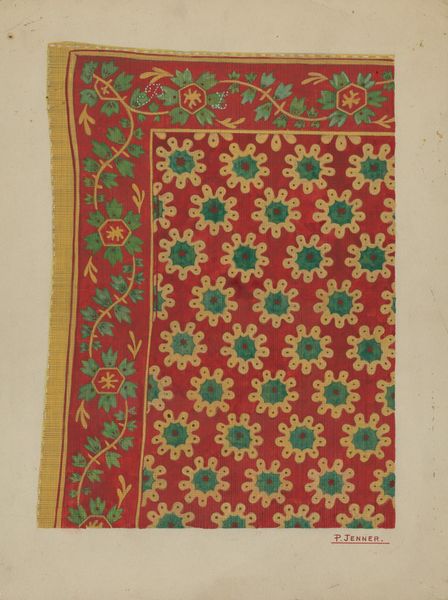
drawing, textile, paper, watercolor
#
drawing
#
water colours
#
textile
#
paper
#
watercolor
#
coloured pencil
Dimensions: overall: 30.4 x 22.7 cm (11 15/16 x 8 15/16 in.) Original IAD Object: 88" long; 70" wide
Copyright: National Gallery of Art: CC0 1.0
Curator: The quiet simplicity is quite striking, wouldn't you agree? Almost minimalist. Editor: There's a reserved tenderness about this. It feels intimate, like a carefully folded secret. It's identified as "Blanket," made circa 1936 by Mary Berner, a study rendered on paper using watercolour and coloured pencil. Curator: The year interests me, the mid-1930s. This was likely created during the throes of the Great Depression. It makes me wonder, was Berner documenting a cherished heirloom, clinging to memories of more comfortable times, or was this simply an exercise in capturing domestic tranquility in the face of widespread upheaval? Editor: It certainly seems to be referencing a textile of some kind, not an actual blanket, the soft focus of the watercolours, the faint lines. Is this blanket a symbol? A comforting emblem? A reminder of heritage, a symbol of the domestic sphere which had traditionally been coded as female in that period? The geometric pattern feels both homespun and very carefully organized within the larger form of the textile. Curator: Exactly, note the geometry, especially within that central circular design. The intersecting lines almost radiate outward from a hidden centre, reminding me of celestial maps or even mandala patterns. Is it merely decorative or does it reference deeper connections to the earth and cosmos? We know how often textiles encode cultural and psychological ideas of home. Editor: Perhaps Berner is weaving her own narrative into a seemingly everyday object. It certainly reflects on gendered and classed aspects of the 30s: the intersection of practicality and beauty. How these humble materials like watercolour on paper evoke so much, I'm taken by its delicate power. Curator: A convergence, indeed, where social history meets symbolic resonance, a moment caught between quiet domesticity and turbulent historical tides. Editor: It’s certainly granted me a deeper connection to this deceptively plain "Blanket." I will now think more about Mary Berner’s hand, and those quiet times, perhaps now a bit more illuminated.
Comments
No comments
Be the first to comment and join the conversation on the ultimate creative platform.
